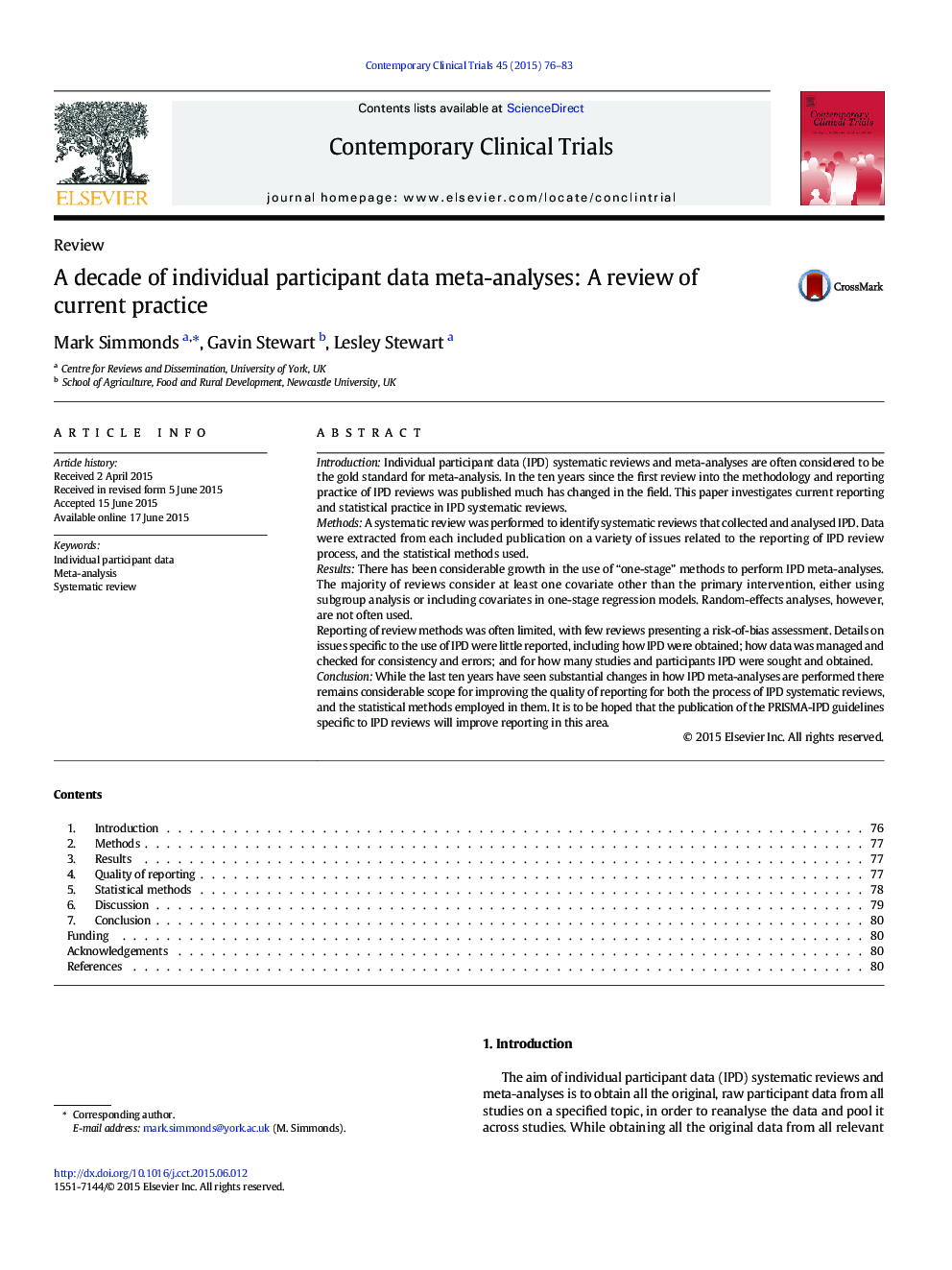| Article ID | Journal | Published Year | Pages | File Type |
|---|---|---|---|---|
| 3462629 | Contemporary Clinical Trials | 2015 | 8 Pages |
IntroductionIndividual participant data (IPD) systematic reviews and meta-analyses are often considered to be the gold standard for meta-analysis. In the ten years since the first review into the methodology and reporting practice of IPD reviews was published much has changed in the field. This paper investigates current reporting and statistical practice in IPD systematic reviews.MethodsA systematic review was performed to identify systematic reviews that collected and analysed IPD. Data were extracted from each included publication on a variety of issues related to the reporting of IPD review process, and the statistical methods used.ResultsThere has been considerable growth in the use of “one-stage” methods to perform IPD meta-analyses. The majority of reviews consider at least one covariate other than the primary intervention, either using subgroup analysis or including covariates in one-stage regression models. Random-effects analyses, however, are not often used.Reporting of review methods was often limited, with few reviews presenting a risk-of-bias assessment. Details on issues specific to the use of IPD were little reported, including how IPD were obtained; how data was managed and checked for consistency and errors; and for how many studies and participants IPD were sought and obtained.ConclusionWhile the last ten years have seen substantial changes in how IPD meta-analyses are performed there remains considerable scope for improving the quality of reporting for both the process of IPD systematic reviews, and the statistical methods employed in them. It is to be hoped that the publication of the PRISMA-IPD guidelines specific to IPD reviews will improve reporting in this area.
